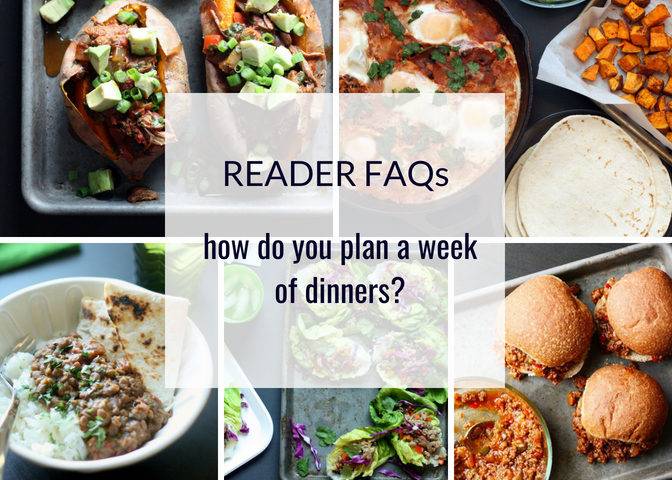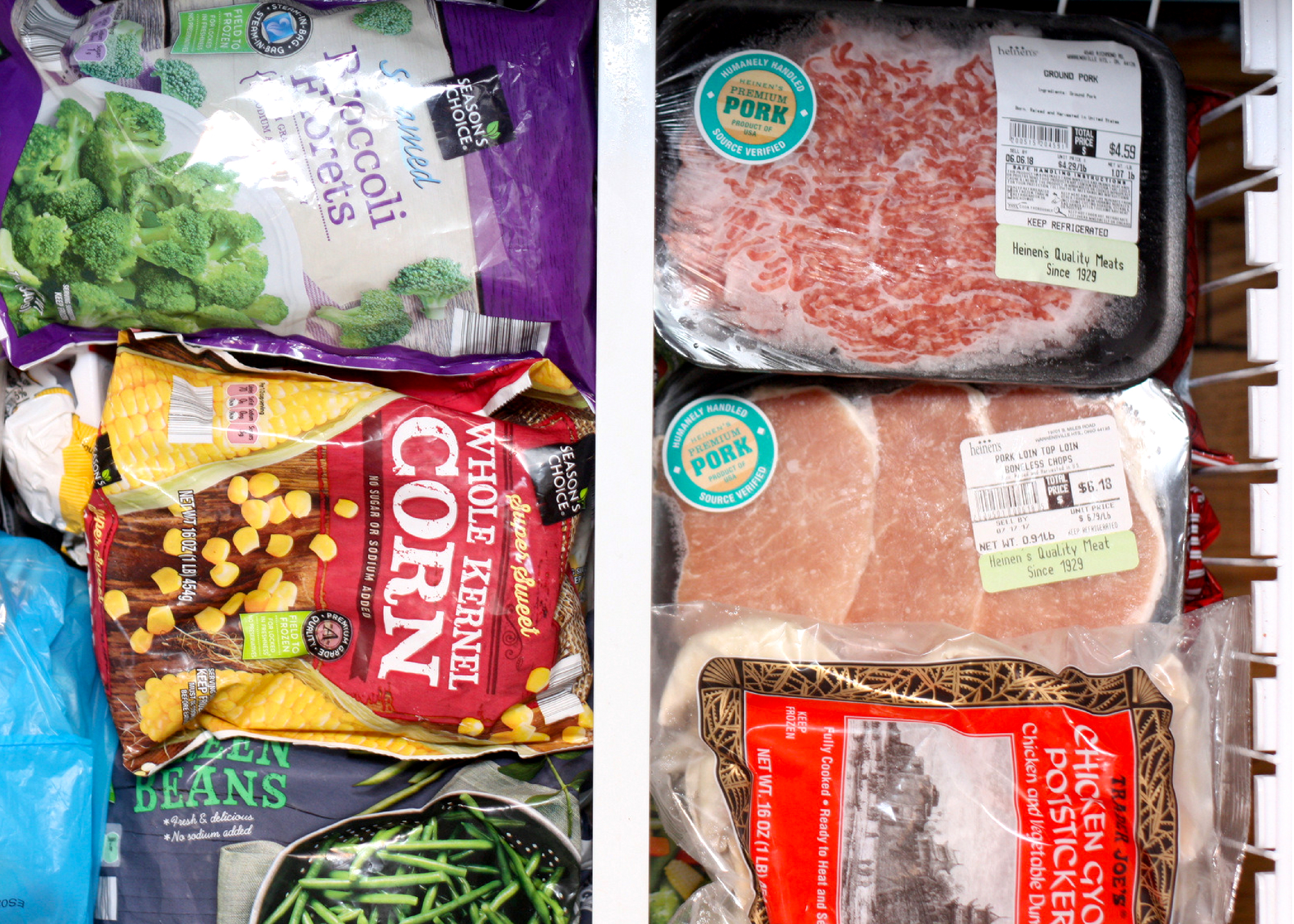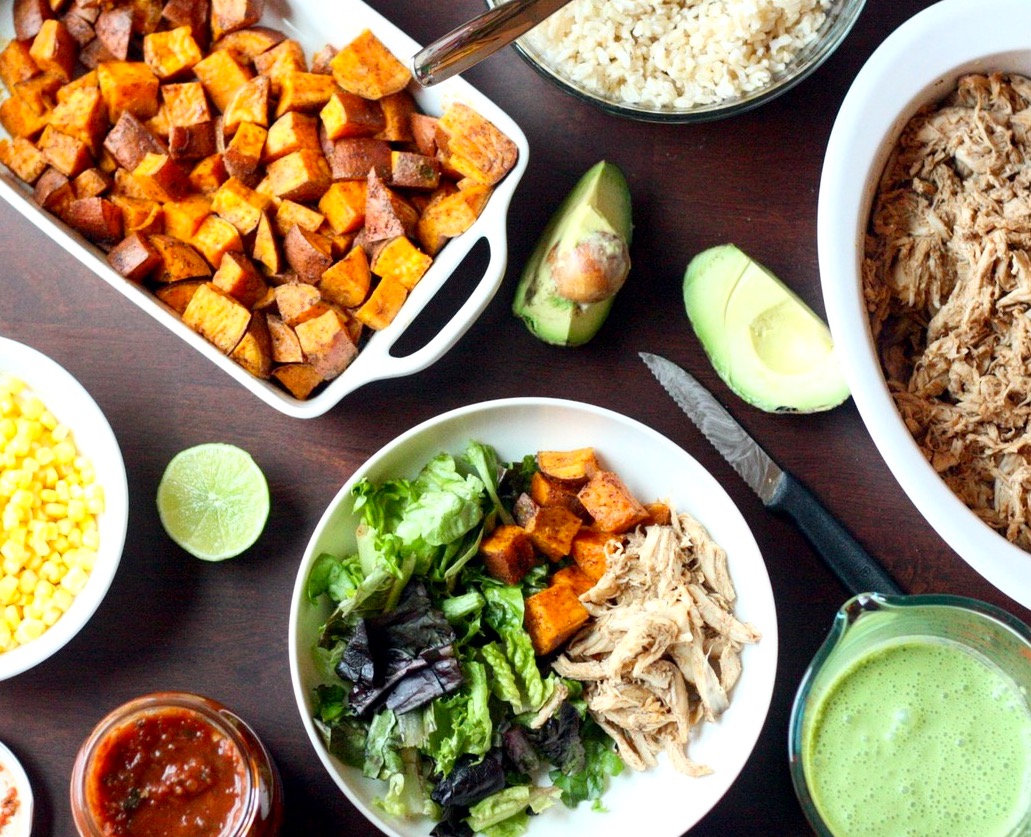How I Plan Our Weeknight Meals (Almost) Every Week

What’s the number one frequently asked question I receive?
How do you come up with your weekly dinner plans?
Much of what drives me to plan our weekly dinners in advance comes back to saving. Saving time and money are motivation enough for me to stay aboard the dinner planning train most weeks. But believe me, there are weeks I step off the train, either out of boredom or overwhelm or indifference, and we wing it. This is usually not without a few consequences in the form of too much take-out and dinner hour panic, but we all survive. It’s also a good reminder of why meal planning is so beneficial for us at this stage in the game. Like an energizing workout, I never regret doing it.
Here are the six general steps I follow week after week to plan our weeknight menu. There is nothing earth-shattering or exceptional about my process, but it’s a good framework if you’re new to meal planning or just feeling overwhelmed and uninspired with the whole thing and want your mojo back.
Friendly reminder – the point of planning a weeknight dinner menu is to make life easier. And like anything, it may take a little practice to find your groove. There is no one right way except the one that works for you.
STEP 1: TAKE THE PRESSURE OFF
Give yourself permission to not cook dinner every day. Aim to cook no more than 3 to 4 nights per week by building in a couple nights to eat up leftovers, clean out the fridge, have breakfast for dinner or enjoy takeout.
In our house, this usually translates as cooking two dinners a week, a night to repurpose leftovers from either or both of those nights, a fridge clean-out/breakfast for dinner night, and Fridays are almost always left TBD (for either take-out or a pantry recipe).
STEP 2: SET YOUR SCHEDULE
Take a look at your week. Consider after school activities, late work meetings, travel, etc. Determine how many evenings will require cooking a meal and when to plan on leftovers, a store-bought rotisserie chicken, or pb&j and carrot sticks. Write the dinner plan onto your family calendar or post on the fridge.

STEP 3: INVENTORY YOUR KITCHEN
Take stock of what’s in the fridge, freezer, and pantry. Prioritize anything pushing its prime (a couple bell peppers going soft; a 4-month-old frozen pork roast) or anything on the verge of a pantry take-over (five cans of black beans) and come up with a way to incorporate them into your menu. This is a good practice for minimizing food waste.
STEP 4: NARROW DOWN WITH DEALS
Check the weekly grocer ads for protein deals and consider seasonal items. Chicken, fish, and other animal proteins are often the most expensive meal component. If saving a buck is a priority for you, selecting sale and seasonal products is a great way to narrow your menu focus. If ground turkey is the weekly deal, write pasta with meat sauce or chili into your plan.

STEP 5: CONSIDER PRIORITIES
Are you trying to feed your family more meatless meals, fish once a week, more dark green leafy veg? Let that influence your menu where it makes sense. If you want to eat more fish but won’t have the time or patience to cook salmon, plan on tuna salad sandwiches one night.
STEP 6: FILL IN THE BLANKS
After scoping the weekly ads and considering eating priorities, fill in the rest of your menu. Rely on family-favorite staples – a failsafe pasta, tacos or burrito bowls, frittatas, slow cooker hits – and save new recipes for less hectic weekend dinners. Consider where you can cook once and eat twice. If you are a creature of habit and routine, create a four-week cycle menu and keep using it. Assigning nightly theme meals reduces decision fatigue and provides structure for planning (e.g. Monday is pasta night, Tuesday is taco night, etc.).



